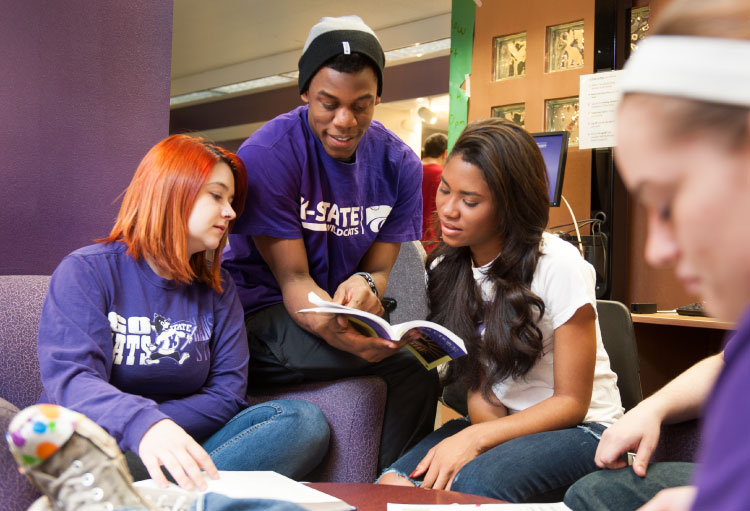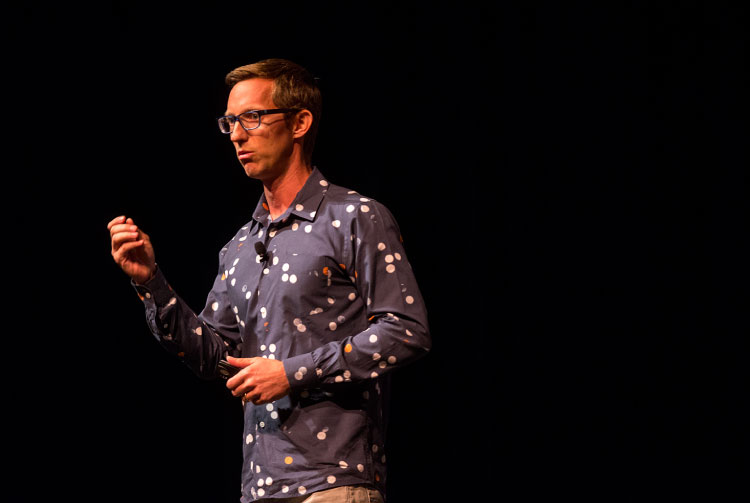Inside and outside of the classroom, students at Kansas State University are engaged in learning and a life-shaping university experience. Their engagement and learning is a central focus and deeply valued goal of faculty and staff across the university. This student-centered culture—the Wildcat Way—is what makes the K-State experience so special, and it’s reinforced by activities and programs designed support every K-State student through their college journey. K-State 2025 describes this culture as, “a connected, diverse, empowered, engaged, participatory culture of learning and excellence that promotes student success and prepares students for their professional, community, social, and personal lives.” And, over the past five years, the activities and initiatives within K-State 2025 have helped the university make great strides in the retention and graduation rates of its students—including the highest Freshman-to-Sophomore Retention rate in K-State history. But behind the goals, the metrics, and the shared vision are countless stories of the people—the students, faculty, and staff—who put these values into practice every day. To foster this supportive environment, it takes a community-wide commitment, and it starts where so many K-State stories begin: the first year.
“How do students figure out how to do college?” asks Gregory Eiselein, Donnelly Professor of English, University Distinguished Teaching Scholar, and Director of K-State First. The first year of the undergraduate experience is something the peer mentors and over 100 faculty involved in K-State First take very seriously. From piloting a few First-Year Seminars in 2008 to engaging about 2,300 out of K-State’s 3,800 first-year students this semester, K-State First started small and has made a big impact.
In the typical arc of the college experience, students progress into the upper levels of their academic program to find community with students in their major as well as deep and focused engagement in their coursework. Many of the programs of K-State First set out to begin this level of engagement and collegiality in a student's first academic year. Through First-Year Seminars, CAT Communities, and one-on-one mentoring through GPS (Guide to Personal Success), K-State First helps first-year students engage in their first year by “starting small.”

CAT Communities offer students the opportunity to connect with other students around topics that interest them. This creates opportunities to learn almost anywhere. These students are studying in a residence hall through a living-learning community.
“The idea of learning communities is ancient,” said Eiselein. “There’s so much research to prove that people learn better in groups, and these First-Year Seminars and CAT Communities are designed to do just that,” he said. First-Year Seminars are small, hands-on sections of courses in various fields that allow students to interact with their professors and fellow students to get comfortable in the academic environment. These small learning communities are limited to 22 students each and are taught by exceptional K-State faculty members who have an interest in working with first-year students.
Connecting Across Topics or “CAT” Communities are also limited to 22 students who connect with each other and their academic interest by enrolling in the same section of two regular courses in addition to a one-hour connections course, where they engage with the material in each course and connect around a common interest. The connections course is co-facilitated by a K-State instructor and a peer mentor who help bring the content and the learning to life. There are four different types of CAT Communities, including: residential (a living-learning community where the students are placed in the same on-campus residence hall), pre-professional, interest-based, and study abroad. These learning communities span across a wide array of topics, from “Talking Physics,” to “The Art of Engineering,” “The Business of Hospitality,” “Gender, Diversity, and Leadership,” “What Not to Wear: The Psychology of Fashion,” and many more.
In answer to the question, "How do students figure out how to do college?" another essential feature of the CAT Communities is the peer mentor. "One of the things we found out early on is that students often figure out college by emulating other students," said Eiselein. "So the idea was to put some people who are great role models as students right there with the first-year students throughout their experience."
The peer mentors, or "Learning Assistants," are nominated by the instructor of each CAT Community to serve that community in future semesters. Typically, they are juniors or seniors who have taken those particular classes or share that career interest. The peer mentors provide insight and guidance to the students in each learning community and, in the Residential CAT Communities, live alongside their students in the residence halls. Coordinating the Residential CAT Communities is often a logistical challenge that requires a strong partnership with Housing and Dining Services. "Housing and Dining provides a lot of logistical support and training to our Residential Learning Assistants (RLAs); they really go above and beyond to help make this program work," said Mariya Vaughan, Assistant Coordinator of K-State First and CAT Community instructor. “The RLAs form a unique relationship with the students in the course, and it allows them to support students inside and outside the classroom,” said Vaughan.
“I really appreciated having a group of people that I knew and could connect with in all of my classes, and having my RLA who was willing to support me meant a lot,” said Abby Monteil, a former CAT Community student who is now the Residential Learning Assistant for “Muggle Studies: How Harry Potter Shaped the World.” As a student who is not so far removed from the challenges of the first year, Monteil is one of the many Learning Assistants who choose to give back to up-and-coming K-Staters. “Adjusting to college can be hard, so I hope that being part of this can create a support system for them,” Monteil said. "I want them to find their fit and truly feel at home at K-State."
“I hope my students will take away knowledge about the resources available to them on campus,” said Courtney Thompson, Learning Assistant for the “Sophomore Success” CAT Community. "I also hope they gain personal confidence and a sense of community," she said. In addition to the support they provide through the college transition, the CAT Community experience also fosters the development of strong academic work ethic and intellectual curiosity. Parker Heinze, RLA for the "Psychology of Prejudice" CAT Community said, "I want students to have a passion for learning and always ask 'Why?'"
All the while, these peer mentors are receiving a unique and beneficial development experience themselves. "I’ll take away how valuable teaching and mentorship can be," said Abby Monteil. "It can be a very rewarding experience where both sides benefit from one another," she said. Developing her facilitation skills and having the opportunity to teach the class have been highlights for Courtney Thompson. "I really enjoyed being in the front of the classroom and interacting with the students; they were very responsive," she said. And, in addition to classroom experience, students gain valuable job skills and leadership development through focused training and hands-on work experience. "I also learned the value of establishing strong working relationships with my superiors and mentors who I admire," said Monteil.
The network of faculty and students who are engaged in supporting the first-year experience spans across colleges and units to establish a community-wide commitment to first-year student success. Earlier this year, the Pilots Program and the University Experience Program merged with K-State First to create one unified first-year experience program. The final core initiative of K-State First is the K-State Book Network, which selects a common reading assignment for the entire incoming class and encourages K-State faculty and staff to read the selected book as a way to get the university "on the same page" through engagement in community-wide learning. It's a great way for students to find common ground, start conversation, and engage more deeply with the books and their related themes through a diversity of events, including a lecture with the authors themselves.

Joshua Davis, author of "Spare Parts," gave a lecture to large crowd at McCain Auditorium on October 6, 2016. Davis' visit was part of an annual effort through the K-State Book Network to get the entire class of first-year students "on the same page" with a common reading assignment and a community learning experience. Read about this year's event in the K-State Collegian.
The data on students who participate in K-State First programs speaks volumes about the success and impacts of the programs themselves. “We’ve had a couple experts look at our numbers to see if it’s just a coincidence, and they’ve said, ‘Oh, it’s easy, your programs are really good at preventing first year failure,’” said Eiselein. During their transition to college, many students will fail a class in their first year and get behind on their degree path or their GPA and dig themselves into a hole from which it can be hard to recover. “Our programs are really good at helping students not dig that hole during their first year,” said Eiselein. As a result, participation in K-State First leads to higher retention and graduation rates, more engagement, and higher GPAs.
So with a strong, university-wide first-year experience program, it’s no surprise that K-State’s numbers and metrics are on the rise as well. After years of consistent improvement (png) in Freshman-to-Sophomore Retention, 2016 saw K-State reach it's highest Sophomore Retention rate in school history. After retaining about 85% of its Freshman class in 2016—five years into K-State 2025—the university is only five percentage points away from its 15-year goal to increase Freshman-to-Sophomore Retention to 90%, and the 6-Year Graduation Rate is poised for another increase (png) as well.
The work of K-State First, combined with first-year experience initiatives, mentoring, expanded applied learning experiences, and student success programs all across the university, have helped keep more students at K-State and on the path to graduation and future success. K-State First is "starting small" and continuing to grow and engage more departments and topics, and as it does, the university will continue its momentum towards the goals of K-State 2025. And the people of Kansas State University will continue their important work to positively impact each student’s future, and the broader world, one K-State story at a time.
